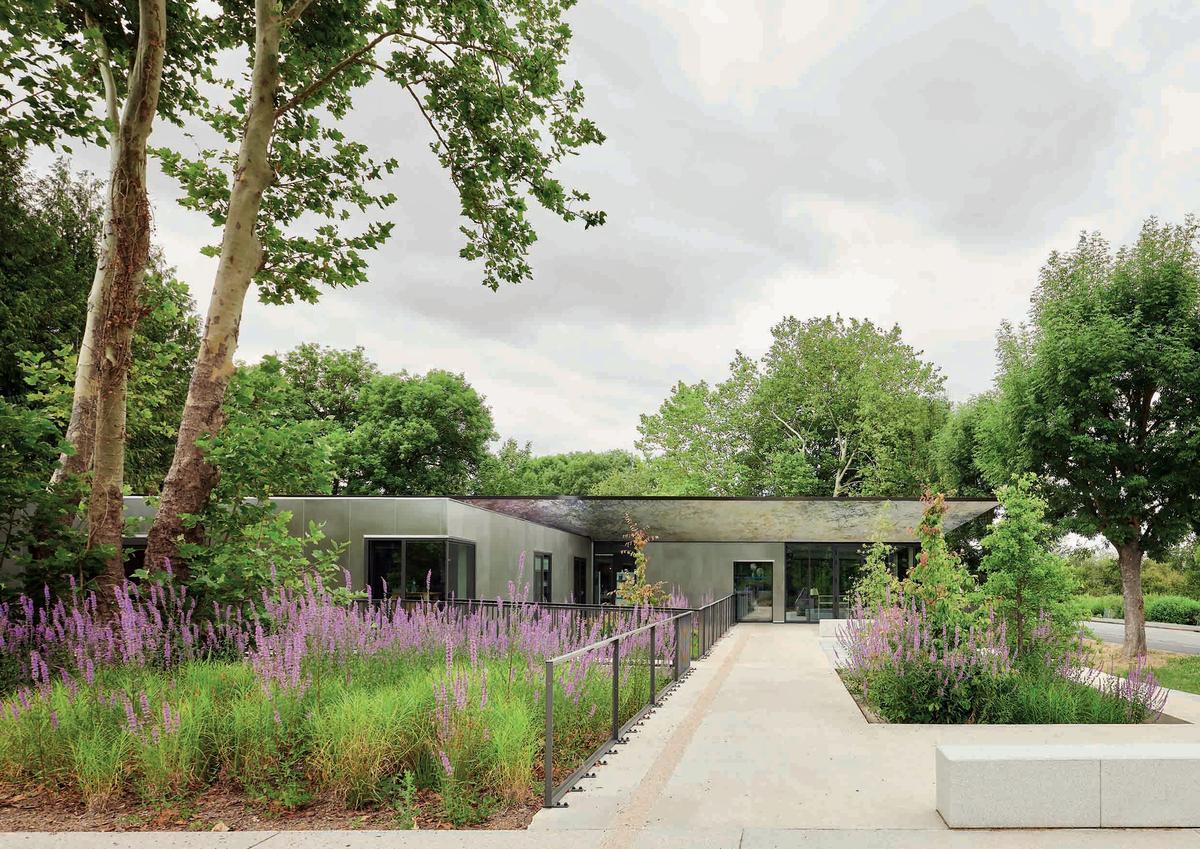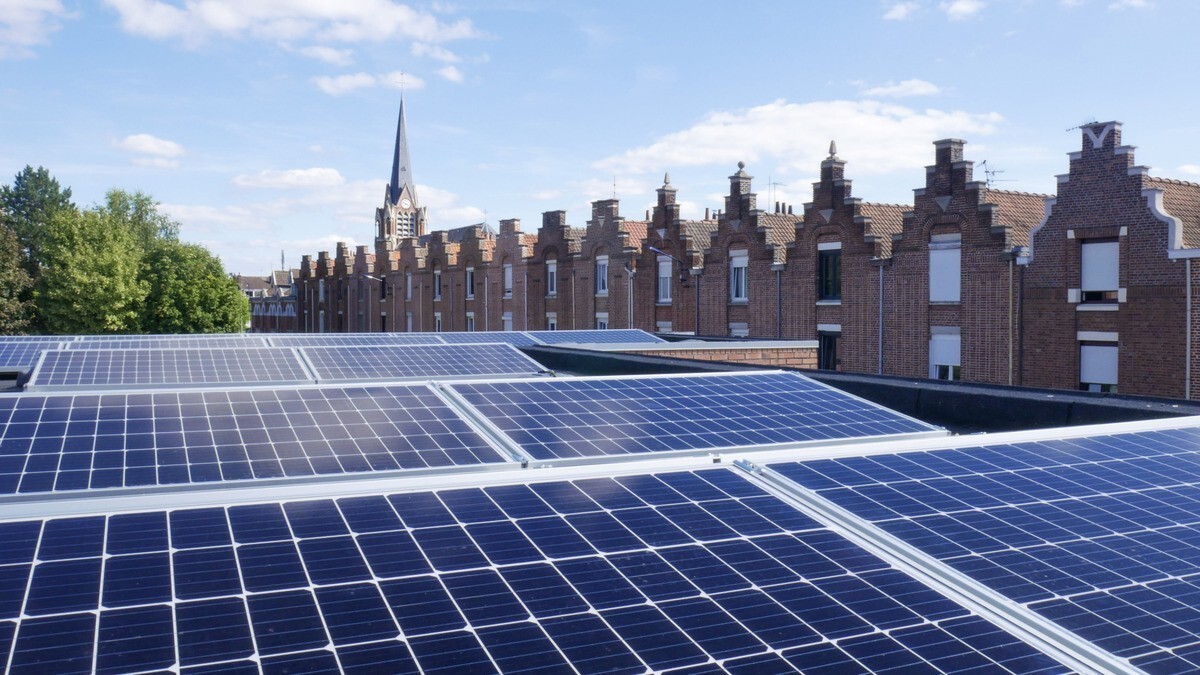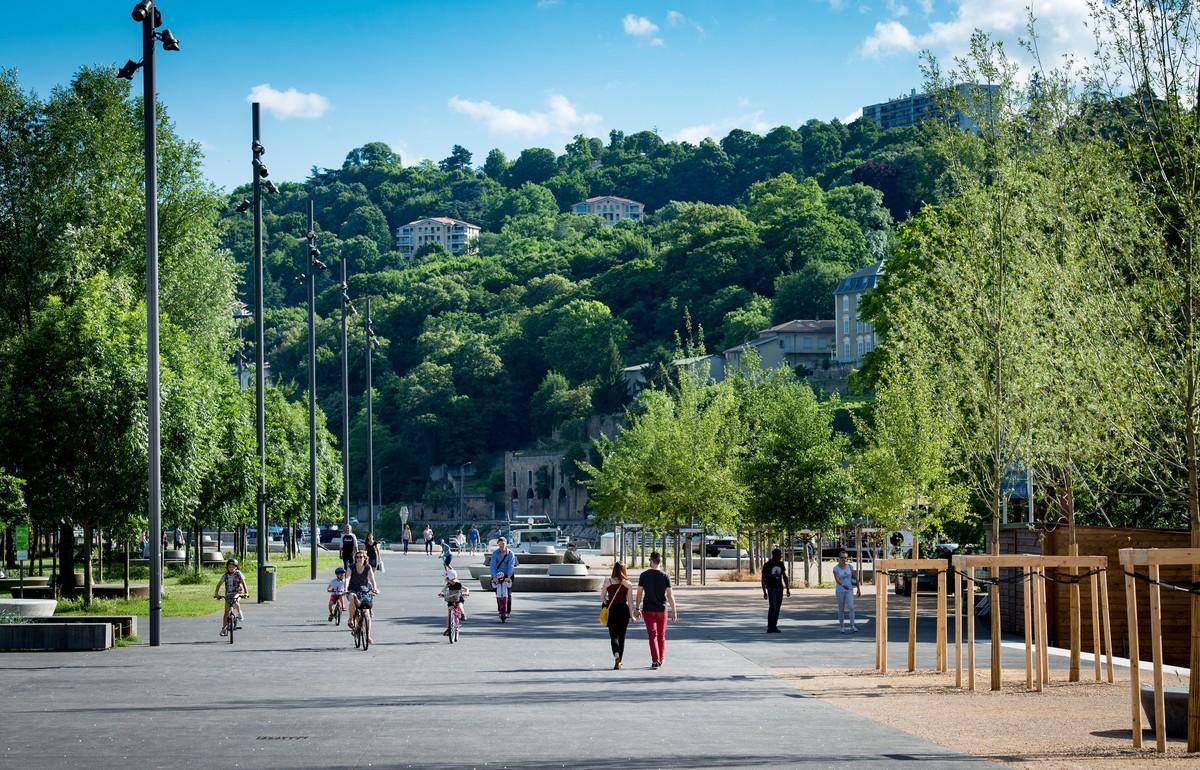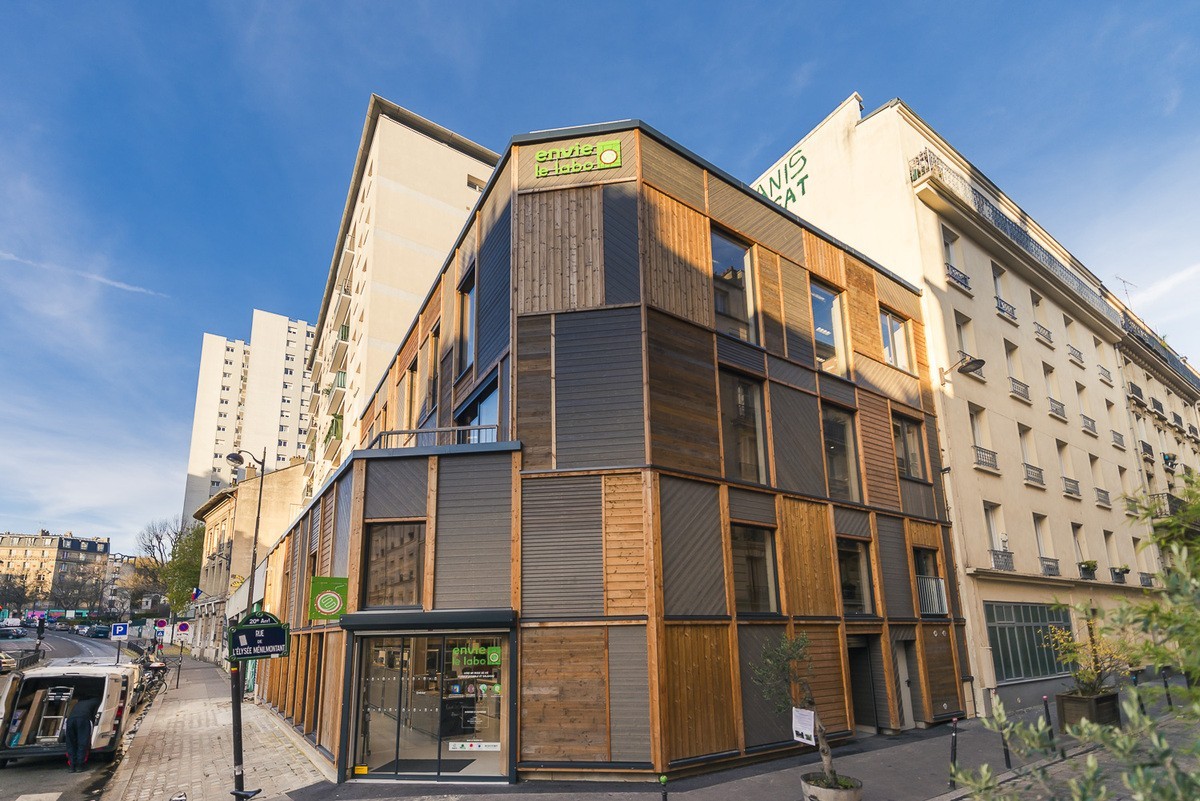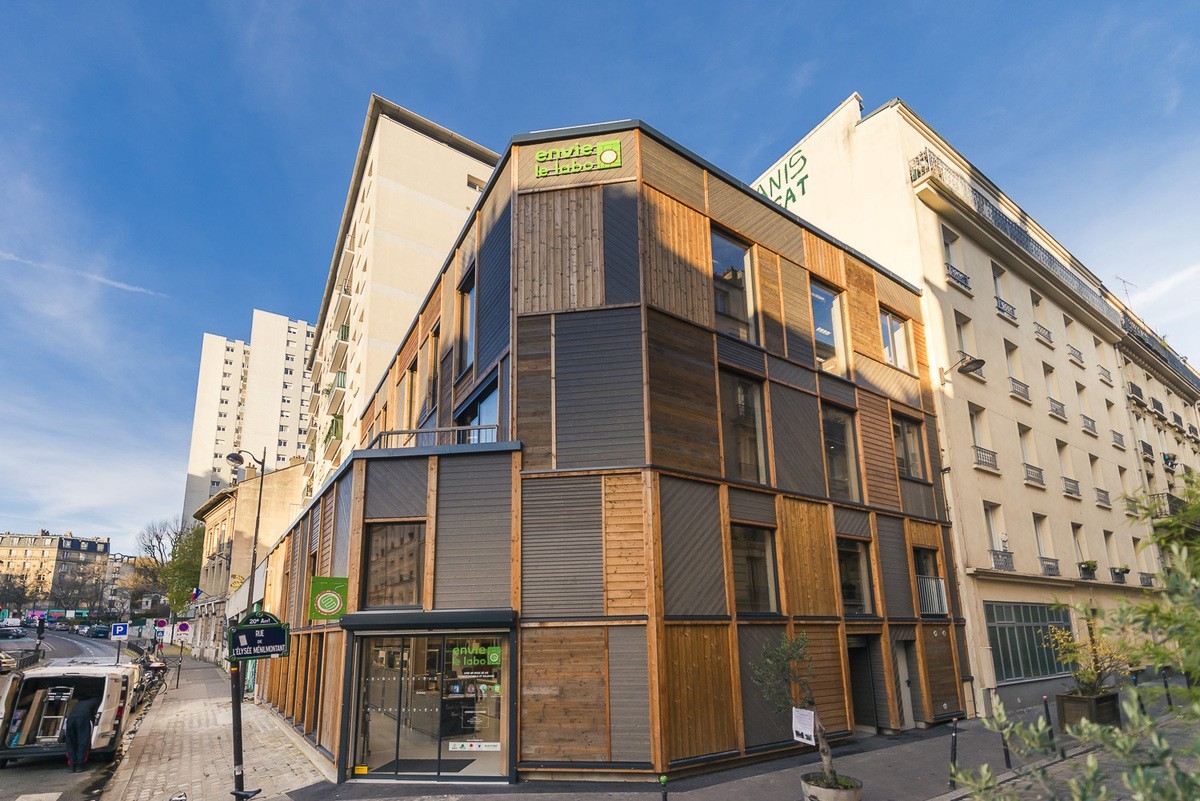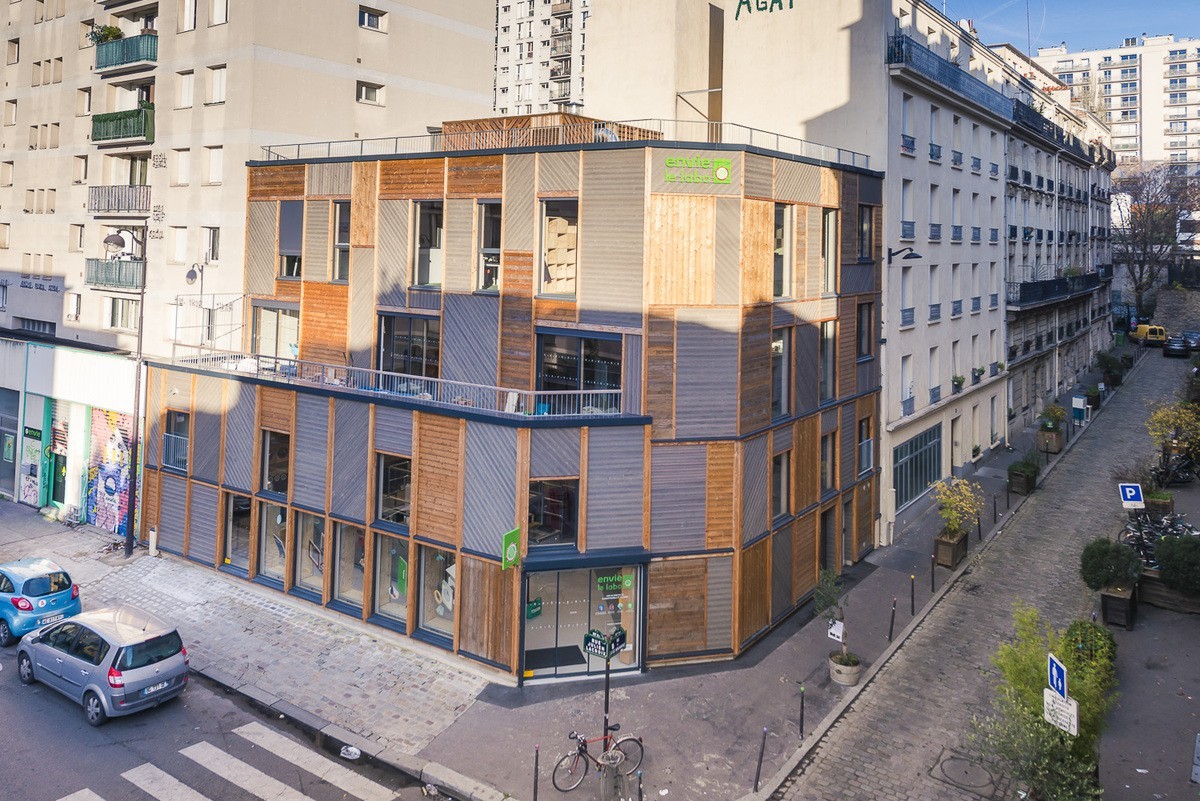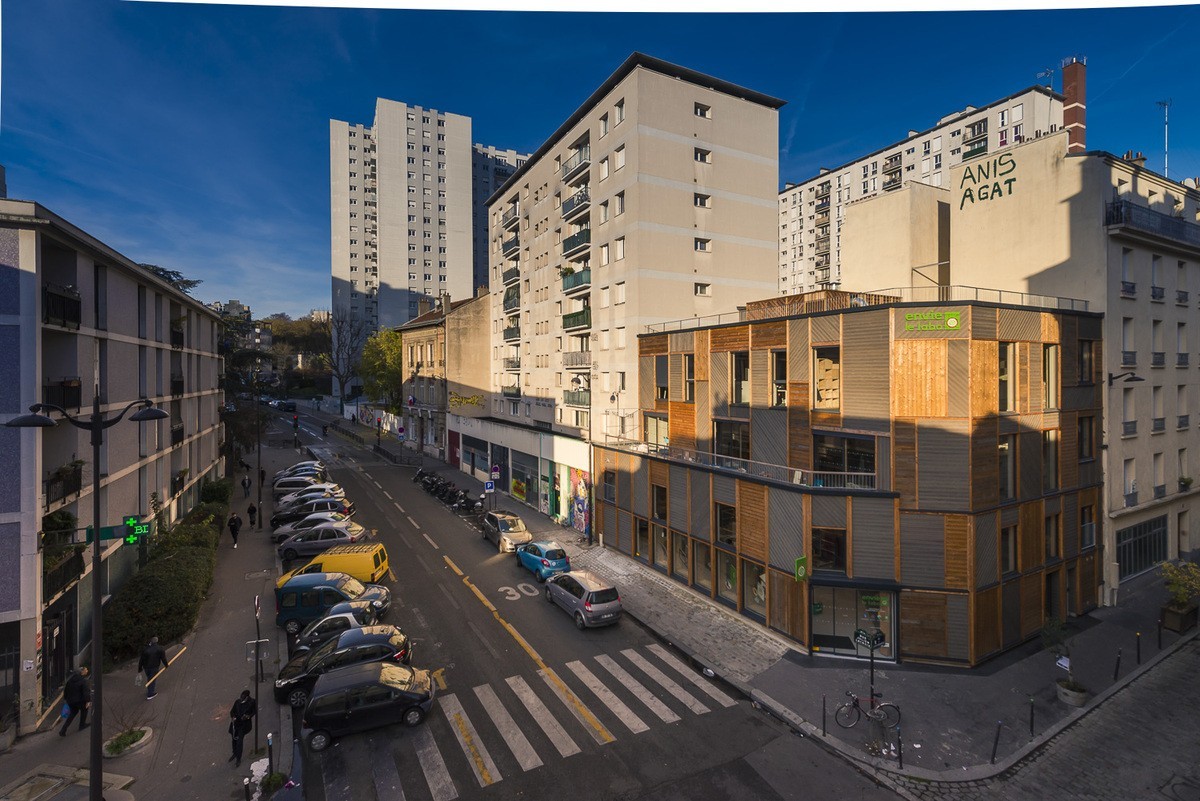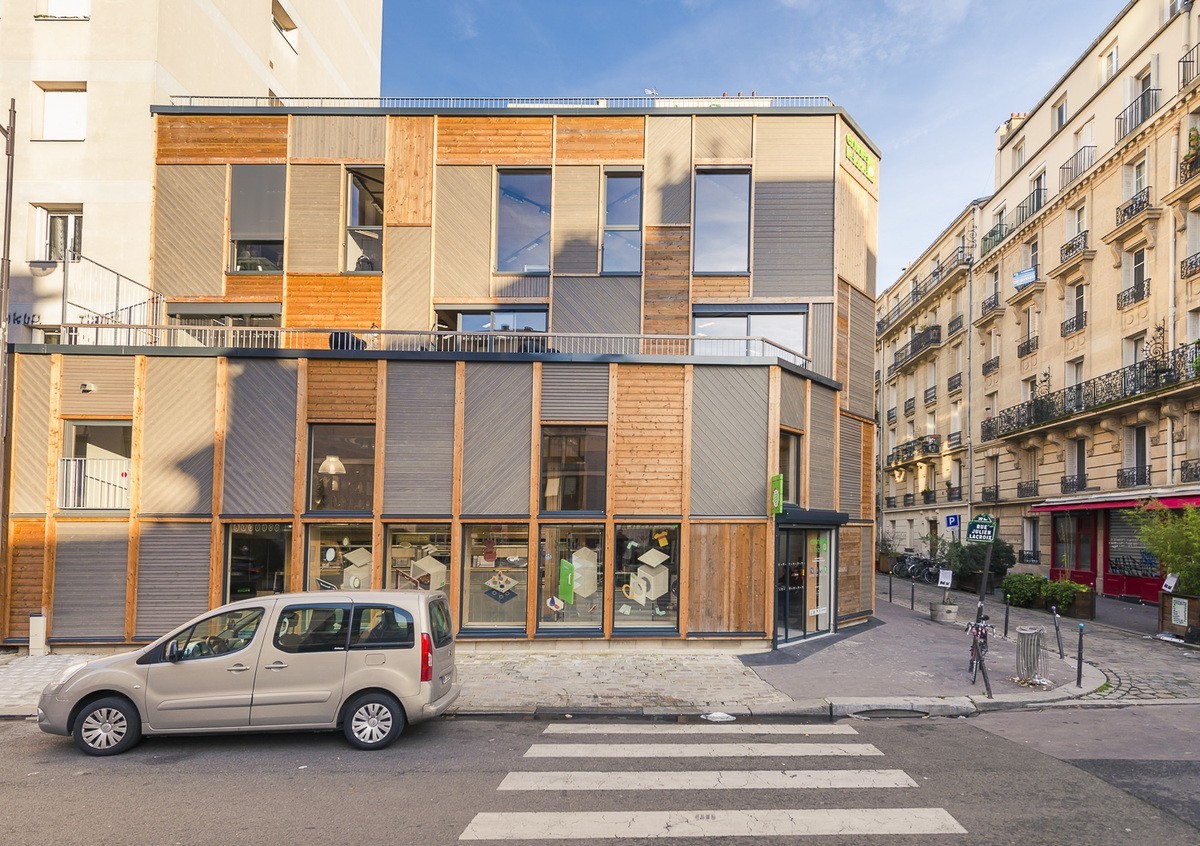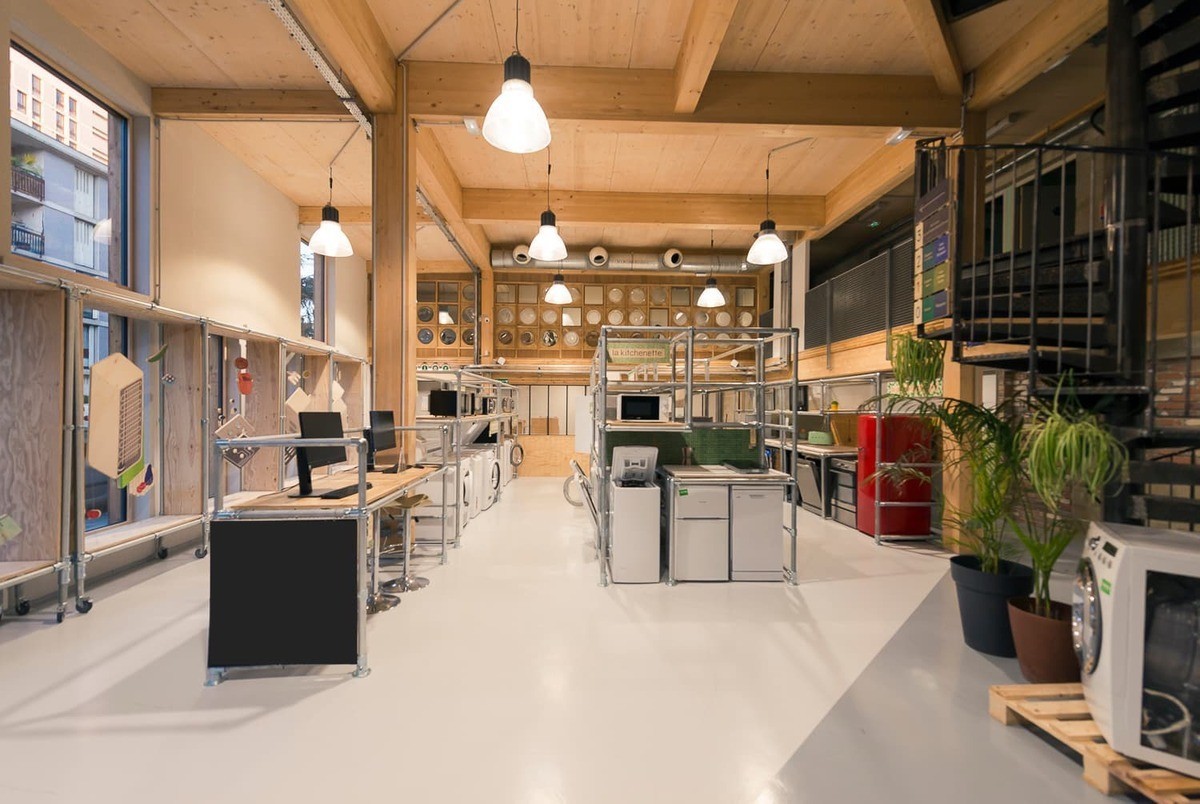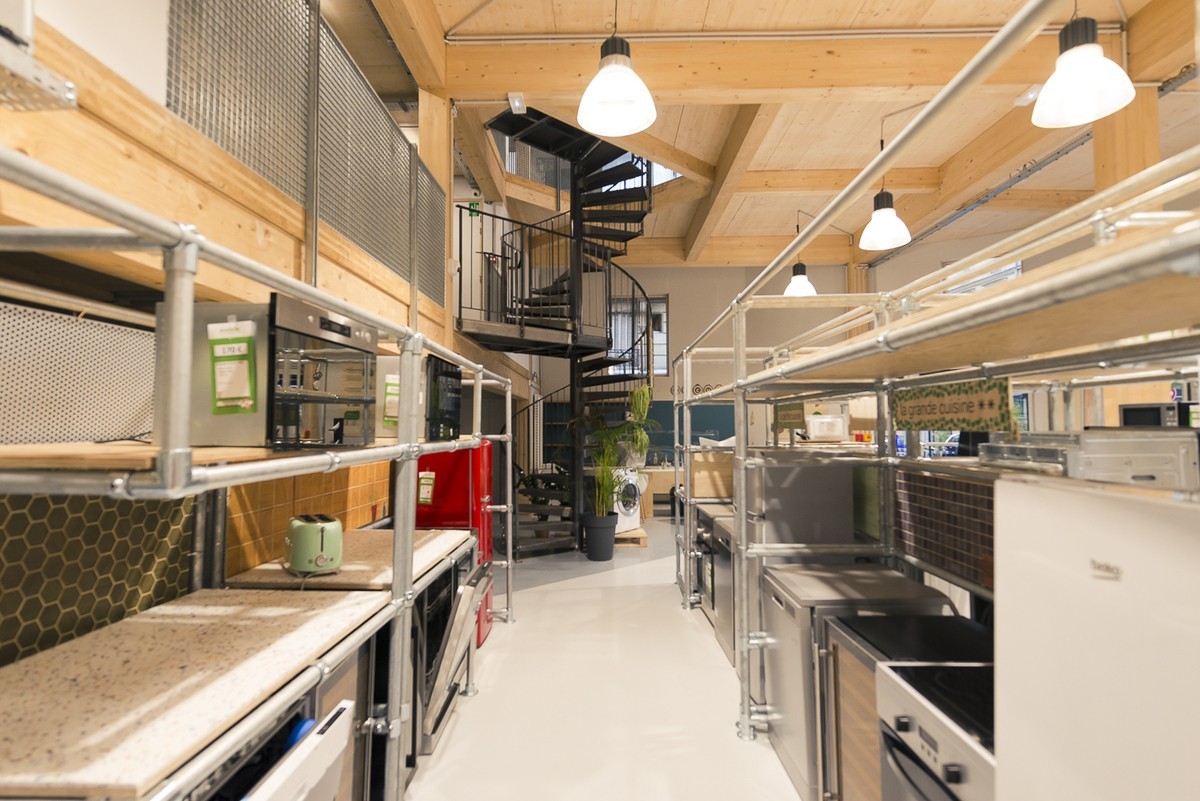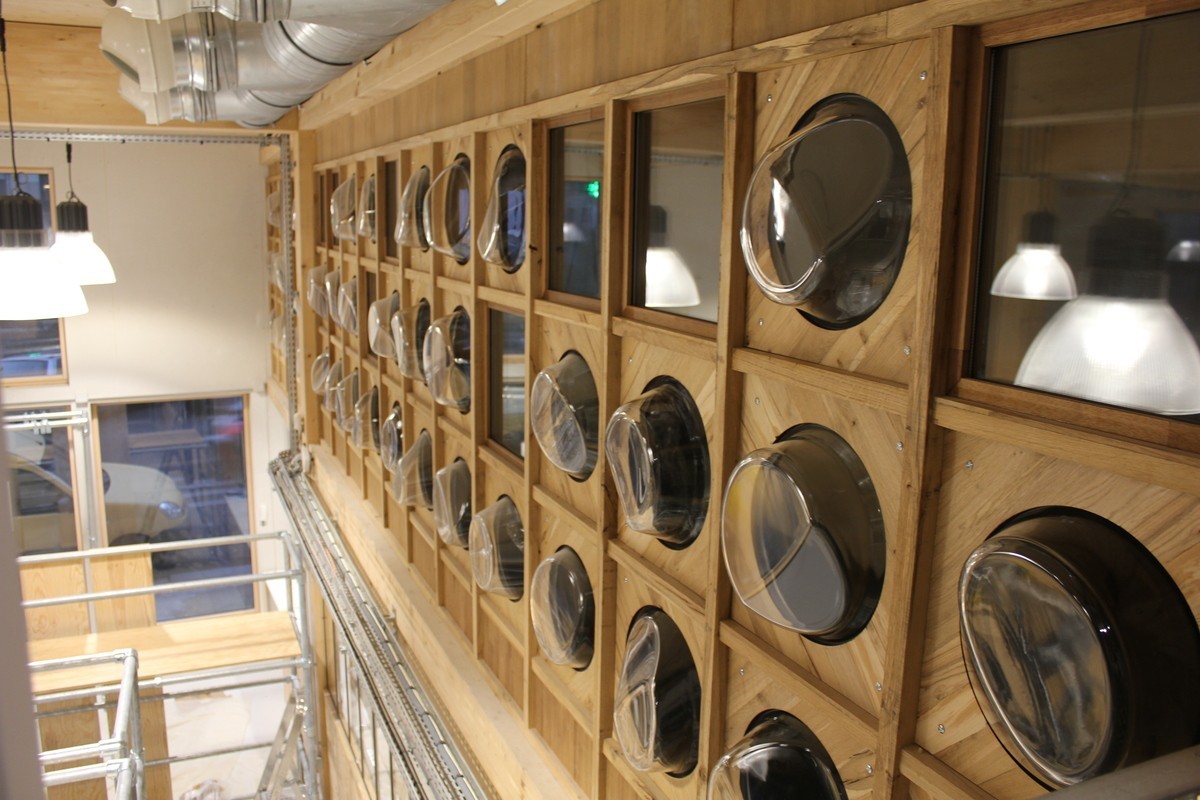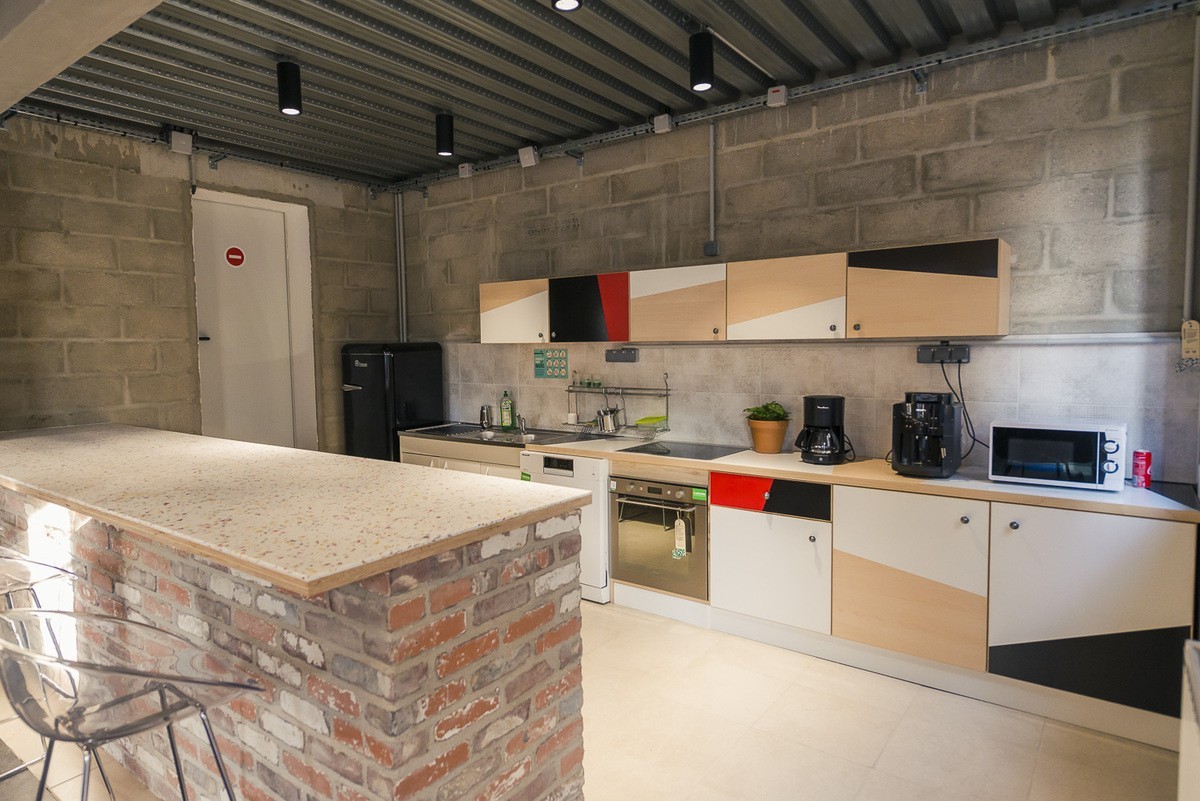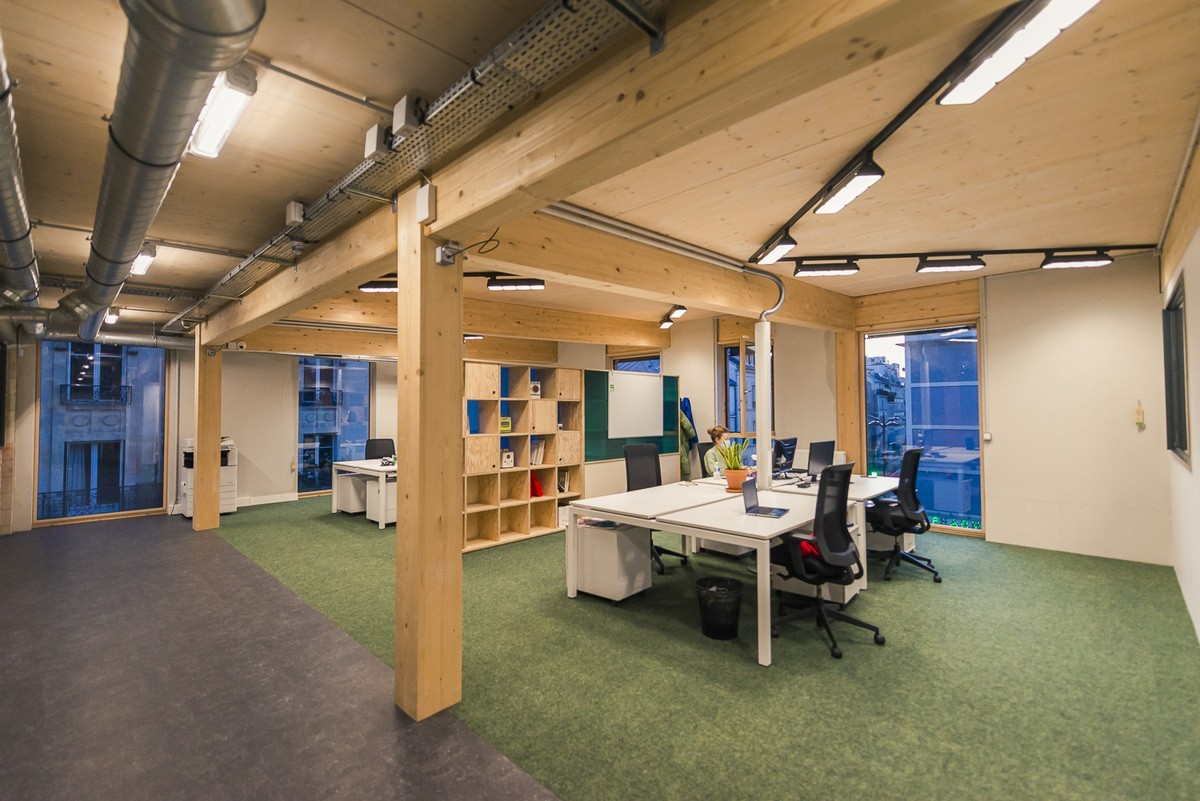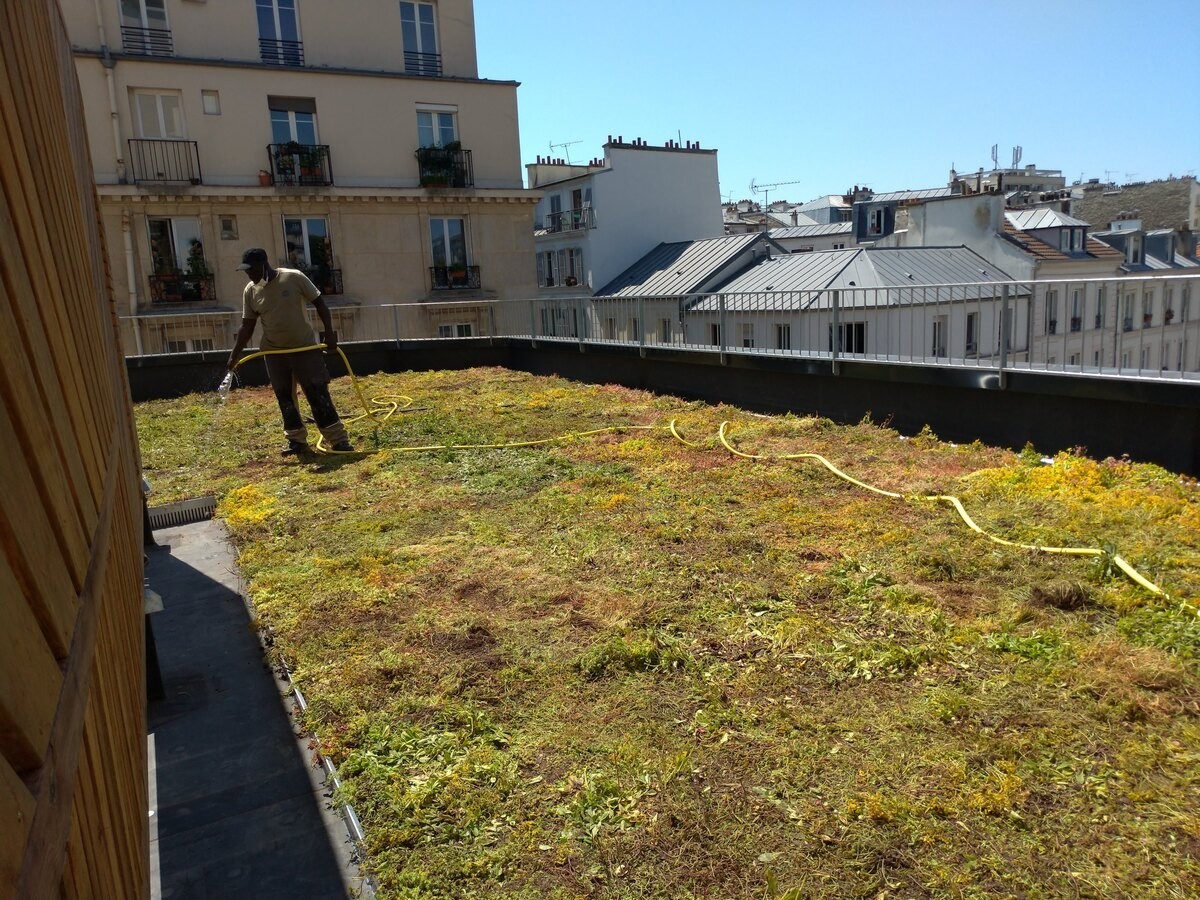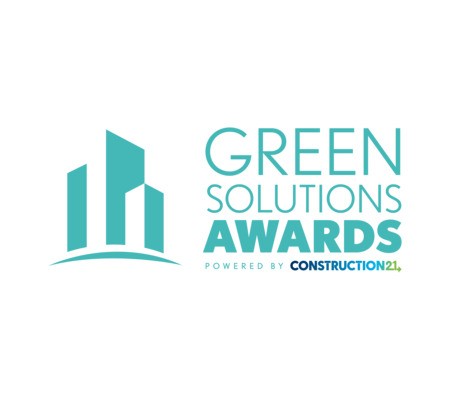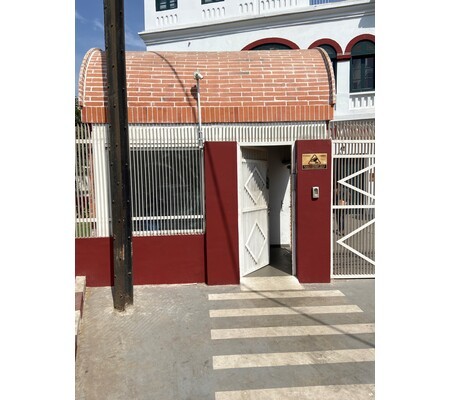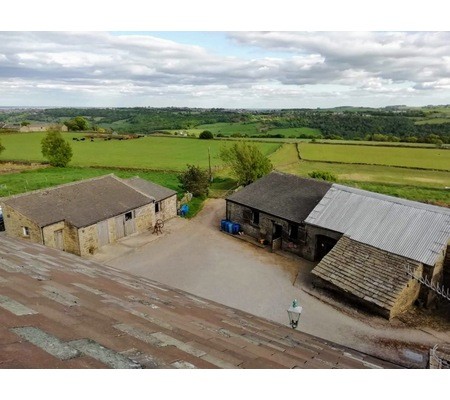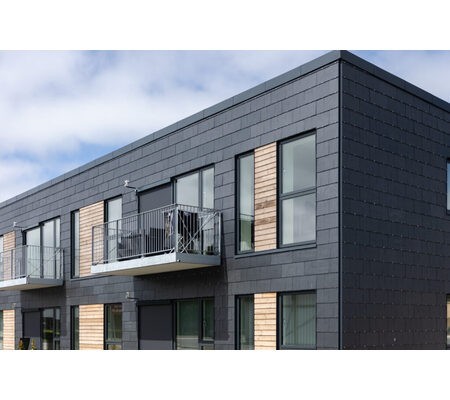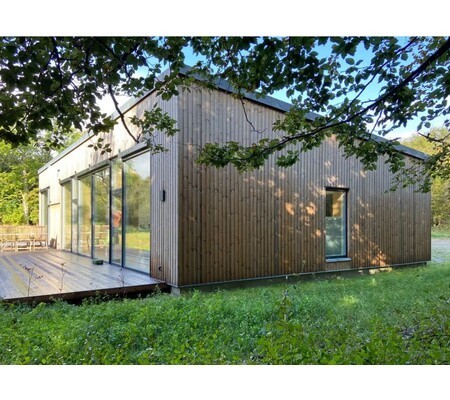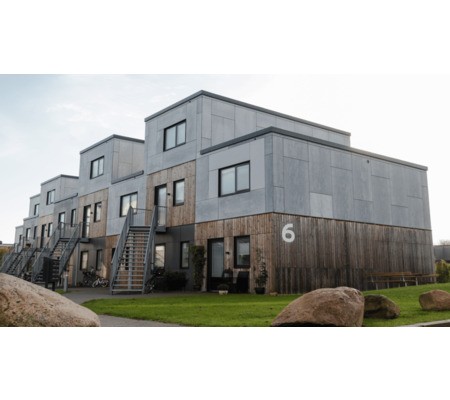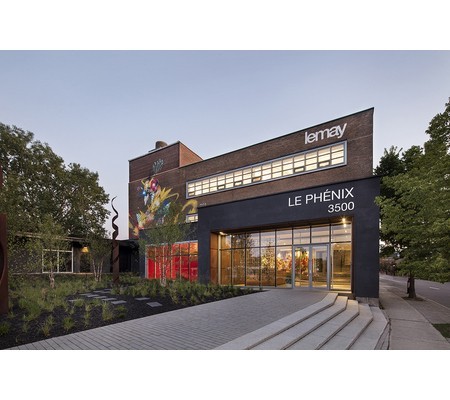Envie le Labo: a building demonstrating reuse
Last modified by the author on 27/05/2021 - 14:30
New Construction
- Building Type : Other building
- Construction Year : 2019
- Delivery year : 2020
- Address 1 - street : 10 Rue Julien Lacroix 75020 PARIS, France
- Climate zone : [Cfb] Marine Mild Winter, warm summer, no dry season.
- Net Floor Area : 553 m2
- Construction/refurbishment cost : 1 500 000 €
- Number of none : 58 none
- Cost/m2 : 2712.48 €/m2
-
Primary energy need
kWhep/m2.an
(Calculation method : RT 2012 )
This project won the “Qui donne envie” mention in the 2021 Circular Building Trophies.
Located in Paris 20th district (Ménilmontant), in the heart of the working-class districts, Envie Le Labo aims to provide practical solutions to citizens to support them towards an eco-responsible and inclusive lifestyle.
The building of the Envie network wishes to promote a circular economy at the service of citizens. With a 70% wood frame, it extends over three floors. On the ground floor, a store is intended to welcome customers with a repair shop for small household appliances, while the upper floors are made up of offices, meeting and entertainment spaces. On the roof is a green roof.
A place of exchange and learning
The objective was to offer a space where people can have their household appliances repaired but also discover the circular economy and get engaged. Thus, educational visits and free thematic workshops around the fight against waste are organized to encourage exchanges around the circular economy. Additionally, 44 beacons scattered around the building allow visitors to explain the composition as well as the origin of reused and recycled materials and objects. They are listed on floor plans located at each level for easy reference.
A strong intention to reuse
Resulting from the end of stock of construction companies and donations from deconstruction (bricks, toilets, mirrors ...), a strong commitment of the Envie Federation was to choose mainly - if not only - materials from the reuse. In total, 19.6 tonnes of new elements were be avoided. A large part of the elements come from the Ile-de-France region (or at most 120km), always in a desire to favour short circuits.
Sustainable development approach of the project owner
Supported by the Envie Federation, a non-profit association, the project has chosen not to be part of a certification process for economic reasons.
On the other hand, it was essential for Envie to demonstrate that it is possible to build and develop more environmentally friendly places with a tight budget.
A strong commitment to a sober and ecological building
As a pioneer in the circular economy since 1984, it was essential that Envie Le Labo reflect the values and know-how of the Envie network.
Three levers were activated for a circular building:
- Reduce thanks to raw finishes (little painting, no false ceiling, few baseboards and formwork)
- Reuse construction materials and objects without transformation: doors, handles, radiators, toilets, sinks, bricks ...
- Re-employ materials to make furniture and partitions (counters, glass roof, coffee table, etc.)
According to the assessment of the circularity of the building carried out by the Evea design office with the support of ADEME Ile-de-France relating to the finishing work and the fitting out of the building:
- 6.9 tonnes of new elements were not used thanks to the avoidance of materials (materials not discarded at the end of the building's life because they were not used)
- 2.3 tonnes of new elements were avoided thanks to re-employ (materials kept and used again for a different purpose)
- 10.4 tonnes of new elements avoided thanks to reuse (materials not discarded and used again for their original use)
In total, 19.6 tonnes of new elements were avoided .
The material recycling rate is 6.1 tonnes, which is significant.
In addition, a green roof has been installed: it allows the retention of rainwater, to keep a cooler temperature during heat waves as well as to promote biodiversity within it.
Local supply and in favor of the social and solidarity economy
Much of the sourcing of materials was done in a short circuit:
a total of 59% of the materials used for the finishing work and interior fittings come from France, including 35% from Ile-de-France. Most of the materials chosen to make the furniture and partitions have traveled less than 120km. In all, over 180 used furniture and refurbished appliances were purchased locally.
Some of the insulation is also bio-based while others are made from recycled cotton.
Envie had recourse to two educational projects and two integration projects as well as to a local Social and Solidarity Economy joinery to manufacture custom furniture and partitions from recycled materials.
Architectural description
The building has a wooden frame with 70% of its structure coming from sustainably managed forests (PEFC). In the same way, a wooden cladding covers the exterior facades made up of reclaimed wood (4 different species from the end of the building site).
The remaining 30% are in concrete blocks for economic reasons.
Unfortunately, the deconstruction of the historic garage did not allow material to be recovered. The original slab was not kept as planned either, for foundation reasons.
Large bay windows and windows and beautiful ceiling heights promote natural lighting, which is also beneficial in terms of energy savings.
Few finishes make it possible to avoid false ceilings, plinths and formwork. Very few paints have been used: all the fermacell, bricks and cinderblock walls have been kept rough.
A partition placed in mezannine, and made from 39 washing machine portholes and wood from an old beam and old windows, constitutes the centerpiece of the building as a demonstrator of the circular economy.
If you had to do it again?
We would be accompanied by a re-employment AMO.
See more details about this project
https://www.envie.org/envielelabo/https://www.construction21.org/france/articles/h/retour-d-experience-envie-le-labo-le-reemploi-a-tous-les-etages.html
http://materiauxreemploi.com/envie-le-labo-un-nouveau-batiment-demonstrateur-du-reemploi-dans-le-20e-arrondissement-de-paris-visite-par-hannah-hofte/
Photo credit
Tarik YAICI
Contractor
Construction Manager
Stakeholders
Company
Union Technique du Bâtiment (UTB)
Thomas Coquin
https://www.utb.fr/General Enterprise
Others
Studio Idaë
Isabelle DAERON
https://www.studioidae.com/Design of layout plans, signage design, scenography, educational path, exterior signs, graphic identity
Others
Contracting method
Lump-sum turnkey
Energy consumption
Systems
- Individual gas boiler
- Individual electric boiler
- Reversible heat pump
- Humidity sensitive Air Handling Unit (Hygro B
- No renewable energy systems
Urban environment
Product
SAS Minimum
https://www.sasminimum.com/Finishing work / paints, mural, wallcoverings
Construction and exploitation costs
- 1 500 000 €
Reuse : same function or different function
- Facades
- Locksmithing-Metalwork
- Indoor joineries
- Floorings
- Partitions
- Plumbing
- others...
Environmental assessment
Social economy
Reasons for participating in the competition(s)
Envie Le Labo se distingue par une construction et un aménagement sobre et écoreponsable :
- En limitant nos besoins fonctionnels et esthétiques à l’essentiel (finitions brutes) et en privilégiant autant que possible la récupération (réemploi et réutilisation), nous avons pu éviter d’avoir recours à 20 tonnes d’éléments neufs, soit 45% de la totalité des matériaux et objets destinés à l’aménagement intérieur de ce bâtiment. Ce sont notamment les éléments ci-dessous avec une provenance de moins de 120km qui ont pu être réemployés et réutilisés :
- Le bardage extérieur, issu d’une fin de stock de l’entreprise générale. Les façades ont ainsi été redessinées à partir des 4 essences et des dimensions des éléments disponibles;
- La cloison séparative bureau-magasin réalisée avec 39 hublots de machines à laver, des anciennes fenêtres et des poutres en chêne de 1910;
- Une verrière en 4 parties fabriquée par un chantier d'insertion à partir de bois et de verre récupéré au musée de Cluny;
- Des moquettes provenant de fin de stock de l’entreprise “Interface” ;
- Des WC et appareils sanitaires issus de l’ancienne école centrale à Chatenay-Malabry (fournis par l’association Réavie et Eiffage Aménagement) et de la base vie ;
- Des éviers de cuisine et professionnel réemployés ;
- Des carrelages et faïences issus de fin de stock de chantiers ;
- Des cloisons vitrées formées de fenêtres de réemploi ;
- Des radiateurs de seconde main ;
- Des briques issues d’une déconstruction à Aubervilliers, trouvées via la plateforme Cycle-Up ;
- De nombreux éléments de mobiliers récupérés via des réseaux associatifs comme Emmaüs ;
- Des portes et des poignées récupérées dans le cadre de déconstructions.
Un bilan de la circularité du bâtiment a été réalisé par le bureau d’étude Evea, avec le soutien de l’ADEME Ile-de-France. D’après cette étude :
- Grâce à l’évitement de matériaux (matières non jetées en fin de vie du bâtiment car non mises en œuvre), 6,9 tonnes d’éléments neufs ont été évités.
- Grâce à la réutilisation (matières non jetées et utilisées à nouveau pour un usage différent), 2,3 tonnes d’éléments neufs ont été évités.
- Grâce au réemploi (matières non jetées et utilisées à nouveau pour leur usage initial), 10,4 tonnes d’éléments neufs ont été évités.
- Le taux de matières premières recyclées sur le périmètre second oeuvre du bâtiment s'élève à 14% soit 6,1 tonnes.
Par ailleurs, 70% de la structure du bâtiment est en bois PEFC.
Le bâtiment dispose également d'une toiture végétalisée permettant de baisser la température lors des canicules ainsi que d'éviter la saturation du réseau d'égout.
Enfin, un approvisionnement local a été privilégié avec une provenance francilienne à hauteur de 35% en masse (soit 13,2 tonnes) des matériaux utilisés pour le second oeuvre et le recours exclusif à des acteurs de l'économie sociale et solidaire pour la fabrication des mobiliers sur mesure circulaires.
Building candidate in the category
